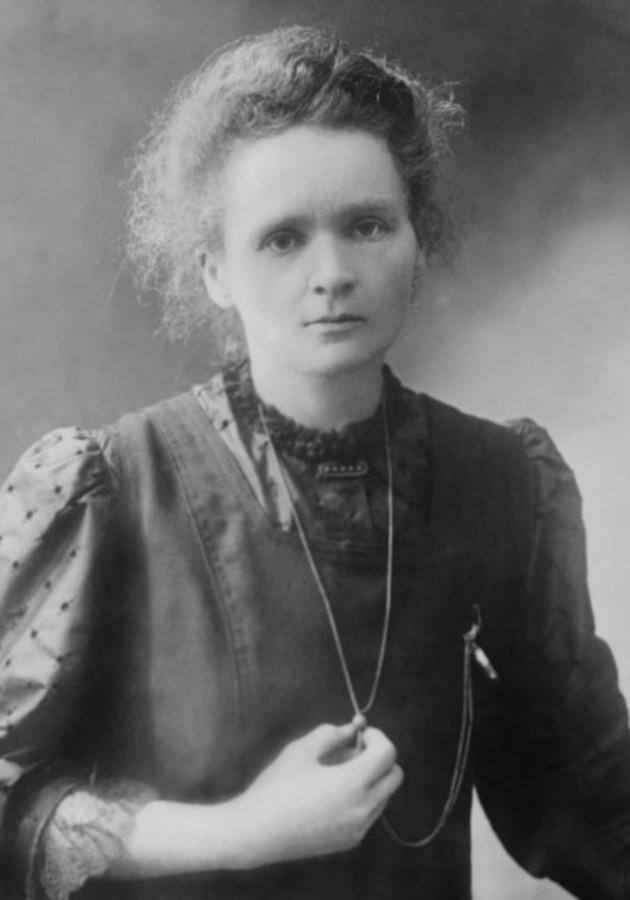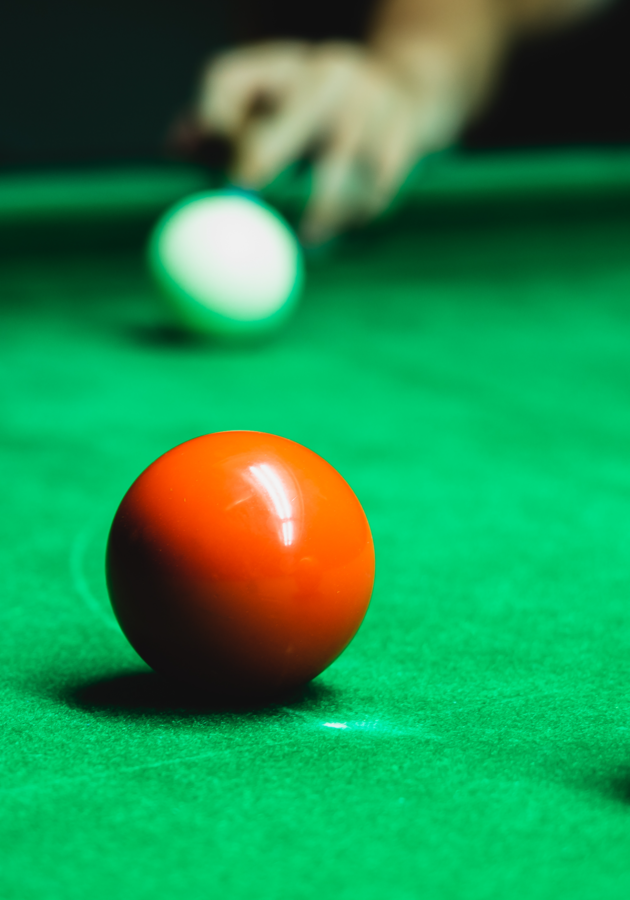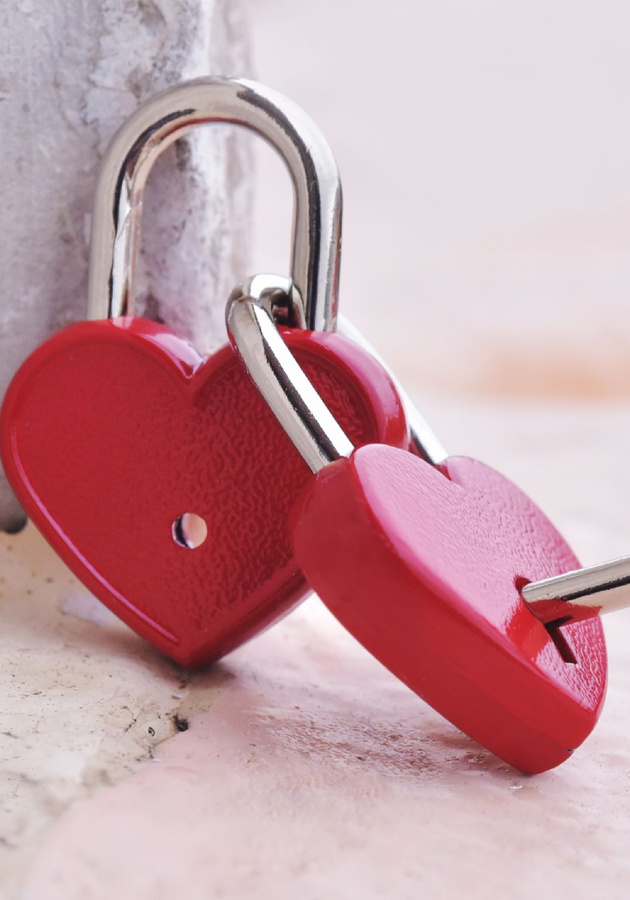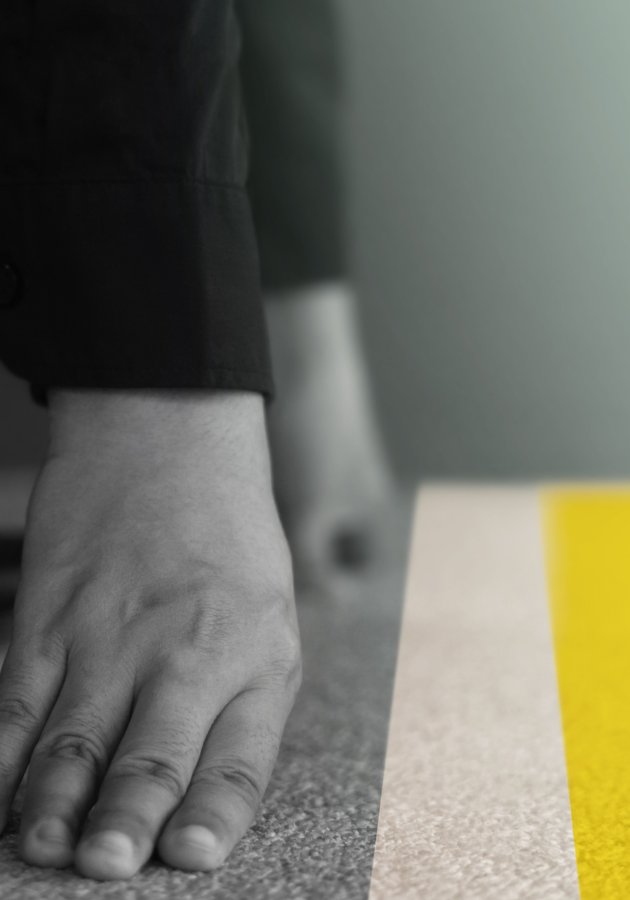Late in October 1911, Ernest Solvay, a wealthy Belgian chemist and philanthropist, organized an invite-only physics seminar in his hometown of Brussels on the subject of “Radiation and the Quanta.” The conference – widely considered the first in the history of modern science – was chaired by Dutch physicist Hendrik Lorentz and attended by 18 of the world’s leading scientists and inventors, including Albert Einstein, Henri Poincaré, Max Planck, Ernest Rutherford, and Paul Langevin .
Even though, at the time, women could barely get a college degree in Europe, there was also one woman present at this legendary meeting. Her name was Marie Curie. Just one day after the conclusion of the conference, she would find herself in the midst of a huge sex scandal. Three days later, on the day of her 44th birthday, she would become the first person in history to win a second Nobel Prize. To this day, she is the only one to have received the coveted prize in two different scientific fields, physics in 1903 and chemistry in 1911. What follows is her remarkable story.
A prodigy in a family of prodigies
Marie Curie was born Maria Salomea Skłodowska in Warsaw, in Russian-dominated Poland, on November 7, 1867. She was the fifth and youngest child of two well-known teachers, Władysław and Bronisława Skłodowski. Not long after the birth of Maria – adoringly nicknamed Manya – her mother experienced the first symptoms of tuberculosis, a highly contagious and incurable disease. As a result of the diagnosis, as much as Bronisława loved her youngest daughter, she could never hold her close, let alone kiss her. It’s possible that the lack of physical contact Maria experienced in her childhood scarred her for life. Indeed, as she grew older, she found it very difficult to be physically close to people.
Maria had a four years’ older brother named Józef, and three older sisters, Zofia (nicknamed Zosia), Bronisława (named after her mother and nicknamed Bronia) and Helena (nicknamed Hela). In 1874, both Zosia and Bronia contracted typhus, which had existed in Poland ever since Napoleon’s invasions at the start of the century. Bronia eventually recovered, but Zosia, the oldest of the Skłodowski children, “her mother’s pride and joy,” died in 1876, at the tender age of 14. Just two years later, on May 9, 1878, Bronisława succumbed to her tuberculosis infection at the age of just 42. Angry with God for letting such bad things happen to the people she loved the most in the world, Manya rejected religion altogether after her mother’s death. She wasn’t even a teenager and she was already a proud and avowed atheist.
But, then again, Maria Skłodowska was always a precocious, immensely gifted child. Things came easy to her. At school, she was able to easily memorize Polish poems and long passages in French, German, and Russian. She performed even better in her favorite subjects, mathematics and physics. Even though younger than her fellow students, when she graduated from the government-run Gymnasium Number Three, she was awarded a gold medal – just like her siblings Bronia and Józef had been before her. There’s no doubt that all of the Skłodowski children were exceptional students. Maria’s abilities, however, were singular even in such distinctive company.
Breaking free: the plan of the Skłodowski sisters
Maria Skłodowska was only 15 when she finished her high-school studies. The pressure of performing academically, combined with the deaths of her mother and Zosia, caught up with her soon after graduation day. As Maria wrote later in her “Autobiographical Notes,” “the fatigue of growth and study” compelled her to take almost a year’s rest in the country, at her uncles’ estates. She then returned to her father in Warsaw, hoping to become a teacher. But “family circumstances” obliged her to change her decision. Her father, then aged and tired, needed rest, but his fortune was very modest to allow him one. So, Maria resolved to accept a position as governess for the family of a Warsaw lawyer to help him.
She found both the position and her employers quite unbearable. In a letter sent to a cousin, she described them as “typical rich people who pose as liberals, while in reality are sunk in the darkest stupidity.” Although they “speak in the most sugary tones,” she went on, “slander and scandal rage through their talk – slander which leaves not a rag on anybody.” Unable to suppress the growing dislike of her first employers, Maria broke off the relationship with them after a few months. By then, fortunately, she had developed a plan with her sister Bronia that could, eventually, get them both the university education they had always dreamed of, and couldn’t get anywhere in Poland on account of their gender.
The plan was as follows: Maria and Bronia would work as a relay team. First, Maria would find another job as a governess (this time outside of Warsaw), live on a pittance, and save the majority of her salary to help her father and support Bronia. Meanwhile, Bronia would depart for study in Paris, using her savings to pay for the trip and relying on her sister’s help for the future. After finishing medical school and becoming established in her profession in France, Bronia would then help Maria to follow her. In the face of regrets for her sister’s sacrifice, Bronia reluctantly agreed to Maria’s plan.
In keeping with it, in the midst of the winter of 1886, the 18-year-old Maria set off from Warsaw for the manor house of the Zorawski family, some fifty miles to the north, in a place called Szczuki. She would remain there for the following five years. Though the Zorawskis proved much better hosts than her first employers, the intellectual loneliness Maria experienced in Szczuki only stiffened her determination to leave Poland and become a university student in Paris. In 1890, Bronia graduated as a gynaecologist-obstetrician from the Sorbonne. Soon after, she married fellow-physician Kazimierz Dłuski. Keeping her side of the promise, she didn’t wait long to offer hospitality to her sister. As a result, in early November 1891, Maria Skłodowska finally enrolled as a student of physics at the Sorbonne. She was 24.
Mlle. Marie Skłodowska and the education of a 19th-century woman
Poland wasn’t the only country where it was difficult for women to get a university education in the second half of the 19th century. In fact, the oldest college for women in the world, New York’s Elmira College, was founded just 12 years before Maria’s birth. She was already a teenager when France finally decided to open colleges and secondary education to women. Around the same time, Russian mathematician Sofia Kovalevskaya became the first woman in modern Europe to gain a doctorate in mathematics, which she earned from the University of Göttingen in Germany. She couldn’t get a similar degree in her native country because, in the year of Maria’s birth, 1867, the Russian government rejected the petition for women to be admitted to universities.
The decision would affect Maria directly, since throughout most of her life, her birth town of Warsaw was part of a polity known as Congress Poland, a semiautonomous state under a personal union with the Russian Empire. Forbidden official higher education on account of her gender, even before leaving for Paris, Maria vowed to educate herself to the best of her abilities. While still a teenager, she became involved with the underground Floating University, a Polish patriotic institution of higher learning that admitted women students. Contemporaneous reports claim that the Floating University provided Polish intellectuals with a forum where they could discuss radical new ideas such as Marxism, Positivism, and the liberation and unification of their native country. This “parochial little institution,” however, couldn’t provide laboratories, degrees or even a bright future for its casual students.
Things were very different at the Sorbonne. Compared with the “strict supervision” of Gymnasium Number Three and the clandestine activities of the Floating University, Sorbonne seemed a refuge, a sanctuary for Maria’s curious and scientific mind. Above all, she was impressed with the autonomy she was given to shape her university experience. Maria was not only free to attend classes as frequently as she wanted, but was also free to choose when to take the exams for a diploma. She passed her licence exam in physics in 1893, as first in her class. At the end of the next year, she obtained her second degree, a licence in mathematics. This time, to her slight disappointment, she ranked second. The name that stood on the dotted line of the two diplomas wasn’t her birth name, though. It was a slightly Francized version: Mlle. Marie Skłodowska.
Men and women and stereotypes – and destiny, as well
At the time Marie Skłodowska got her two degrees from the Sorbonne, the French word étudiante didn’t really mean “female student” but was merely one of the many sobriquets people used to denote the mistresses of male university students. “These étudiantes,” quipped once French chronicler Henri d’Almeras, “were not the kind who prepared for exams but the kind who distracted you from preparing.” Another historian, Jules Michelet, reported that the worst fate for a woman at the time was to live alone, bemoaning the fact that single female students were casually mistaken for prostitutes. Renowned French novelist Octave Mirbeau was one of the many who didn’t mind such discrimination. “Woman is not a brain, she is a sex,” he remarked on the subject of female education. “She is not good for anything but love and motherhood.”
Owing to this kind of cruel stereotyping, Frenchwomen weren’t as courageous as foreign women to enter their own universities. Indeed, up until the beginning of World War I, foreign women outnumbered Frenchwomen in every field of study at the Sorbonne. But that doesn’t mean that foreign women weren’t treated with contempt and ridicule as well; it was just of a different type. “What distinguishes the serious female student, almost always a foreigner, is that almost no one takes her seriously,” d’Almeras wrote. “These female students work with great patience, as though they were doing embroidery. Their study makes them ugly. They usually look like schoolteachers and wear glasses. In the examinations, they recite with admirable exactitude what they’ve learned. They don’t always understand it.”
Pierre Curie, one of the most acclaimed physicists in fin de siècle Paris, was far more progressive than d’Almeras but it should surprise nobody that he too shared this chronicler’s beliefs regarding the intellectual disparities between men and women. One day in 1881, the 21-year-old Pierre wrote in his diary that “women love life for life’s sake,” and that, consequently, “women of genius are rare.” “When we give all our thoughts to some work which removes us from those immediately about us,” he went on, “it is with women that we have to struggle, and the struggle is nearly always an unequal one. For in the name of life and of nature, they seek to lead us back.”
Thirteen years after penning these words, in the spring of 1894, Pierre was introduced by a Polish colleague of his to “a brilliant, yet poor female student” desperately looking for a laboratory where she could work on her first research project dealing with the magnetic properties of various steel alloys. At the time, Pierre was working on his doctoral thesis, which coincidentally dealt with magnetism as well. Even though he didn’t have a large laboratory, he offered to find some space at the Paris school where he was working as an instructor. Haphazardly arranged, the ensuing meeting between Pierre and Marie changed everything. Not only for the two of them, but for the future of science and human progress as well.
The art of collaboration: Pierre and Marie Curie
Years later, Marie movingly recalled the first time she saw Pierre Curie. “He seemed to me very young,” she wrote in her “Autobiographical Notes,” “though he was at that time thirty-five years old. I was struck by the open expression of his face and by the slight suggestion of detachment in his whole attitude. His speech, rather slow and deliberate, his simplicity, and his smile, at once grave and youthful, inspired confidence.” Despite the powerful impression Pierre left on Marie even at first sight, she had no expectations of an impending romance. Just a few years before, she had sworn to never marry, planning to devote herself full time to her research. With regards to love and marriage, Pierre was no different. After a young woman with whom he had been in love suddenly died, he had vowed to live the life of a priest. Fate, fortunately for humanity, had much different plans.
Over time, the mutual passion Marie and Pierre shared for science brought them increasingly closer, and eventually, they began to develop feelings for each other. In Marie, Pierre found that “rare woman of genius” he barely believed even existed; in Pierre, Marie finally found a male peer who didn’t look down upon her, but respected her. She was fascinated by the clarity and simplicity of his scientific ideas; he, in turn, was captivated by her curiosity, grit and sheer willpower. “The two seemed to complement each other,” writes a modern biographer. “Marie was determined and focused, while Pierre was imaginative and a dreamer. Both were idealists, but they acted out their idealism in different ways. Marie’s idealism demanded that she return to Poland to contribute towards Poland’s national spirit. Pierre’s hopes were pinned on Marie’s returning to Paris to marry him.”
Indeed, Marie refused Pierre’s first proposal for marriage. She was insistent that, in the grand scheme of things, the future of Poland was more important than her personal happiness. So, just after getting her second degree in mathematics, during the 1894 summer break, she left both Paris and Pierre without even a hint of promise to ever return again. Pierre wasn’t going to give up so easily, however. He begged her to return, writing that it would be a “beautiful thing, a thing I dare not hope, if we could spend our life near each other hypnotized by our dreams: your patriotic dream, our humanitarian dream and our scientific dream.”
Eventually, Pierre’s persistence triumphed over Marie’s reservations. On July 26, 1895, the two were married in a small, non-religious ceremony at the Town Hall in Sceaux (So); they didn’t even exchange rings. The process of the Francization of Maria Skłodowska was now completed: she officially became Marie Curie, the name by which she is most remembered today. Ever practical, she didn’t even bother buying a wedding dress. Instead, the dark blue outfit she wore on her wedding served her for many years as her go-to laboratory suit. After the ceremony, the newlyweds left for the most untraditional honeymoon: a long bicycle trip across Britany. Two years later, Marie and Pierre had their first child together: Irène. It was in this euphoric atmosphere that the Curies turned their attention to the mysterious emissions from uranium recently discovered by a colleague of theirs, Antoine Henri Becquerel.
X-rays, Becquerel rays and uranium salts
Like many other scientific findings, spontaneous radiation was discovered by accident. The story begins on November 8, 1895, when German mechanical engineer Wilhelm Röntgen (Rent-gehn) produced and detected the existence of X-rays, stunning the scientific world. At the time, French physicist Henri Becquerel was investigating phosphorescence, the ability of certain substances to glow in the dark after being exposed to light. Röntgen’s discovery gave Becquerel an interesting idea. Maybe, he hypothesized, phosphorescent minerals could produce X-rays all by themselves. To test out this theory, he put uranium salts on top of a photographic plate wrapped in thick black paper and exposed the setup to the Sun. To see if metals would block the sun rays, he also placed a thin copper cross between the mineral and the paper.
The experiment was a success: the plate darkened, and the pattern of a cross appeared on the plate. Becquerel wanted to repeat the experiment the following day just to make sure his hypothesis had been confirmed, but he couldn’t do it because of the cloudy weather. So, he left the entire setup in a dark cabinet and went on about his usual business, while waiting for a sunnier day to continue experimentation. When that day finally came and he took out the uranium salts and the photographic plate from his drawer, Becquerel was amazed to discover that, even without the sunshine, the plate had darkened, leaving the mark of a cross. He concluded that it must be the mineral causing the reaction, or more precisely the uranium in the mixture. Just like that, Becquerel had discovered an exciting new natural phenomenon: radioactivity.
However, in those days, scientists believed that atoms were indivisible, so Becquerel couldn’t understand the real cause of what he had observed. Even after his experiments, he still felt that the “spontaneous emission of rays” from uranium must be related to some reaction at molecular level, intimately connected to the phenomenon he was more interested in: phosphorescence. Marie Curie – who was, at this time, looking for a subject for her doctoral thesis – correctly theorized that the emission couldn’t be an outcome of some interaction of molecules, but something that must come from the atom itself. The idea was more than unusual at the end of the 19th century, since it presumed something quite radical – that there must exist smaller particles than the atom.
Curie tested her hypothesis by systematically analyzing all of the 80 or so elements known at the time. Her plan was to see if any of them, like uranium, emitted “Becquerel rays,” and to discover whether they’d emit these rays on their own. To achieve this, Marie used an innovative technique devised with the help of her husband. Fifteen years before, Pierre and his brother Jacque had developed an early version of the electrometer, a sensitive device for measuring electrical currents. Knowing that uranium causes the air around it to conduct electricity, Marie decided to use the electrometer to check which other elements would have the same effect. She was amazed to discover that compounds of thorium were capable of “electrifying” the surrounding air just as uranium salts. What she discovered next, however, was far more important, as it shook the very foundations of 19th-century physics.
Expanding the periodic table: polonium and radium
As soon as Marie Curie identified thorium as another radioactive element, she rushed to share her findings with the world in order to establish her priority. On April 12, 1898, she presented a shoddily written paper before the French Academy, outlining in brief her research and her discovery of thorium. However, during the presentation, she learned that a German scientist named Gerhard Carl Schmidt had already demonstrated the ability of thorium to give off “Becquerel rays” two months earlier in Berlin. Nevertheless, Marie’s paper contained a paragraph of utmost importance, which, at the time, must have been ungraspable to both Marie and the Academy. In this paragraph, Marie casually pointed out that a uranium compound called pitchblende seemed to electrify the surrounding air much more than uranium itself. “This fact is very remarkable,” the paragraph ended, “and leads to the belief that this mineral may contain an element which is much more active than uranium.”
Seized with “a passionate desire to verify this hypothesis as rapidly as possible,” Marie immediately went back to the laboratory. Seeing the significance of his wife’s findings, Pierre set aside his much-loved work on crystals and joined Marie in the search for this new element. Working inside an abandoned wooden shed that wasn’t even waterproof, the two devised a new method of chemical research called fractional crystallization. It was a tedious technique founded on the fact that different substances in the same solution form crystals at different temperatures. By boiling immense amounts of pitchblende solutions and gradually cooling them off, the Curies could progressively discard the crystals of all the different constituents of pitchblende until reaching the ones with the highest activity.
While discarding the crystals from the pitchblende, Marie determined that the amount of radiation from a substance depended only on the quantity of the substance present. Radiation, she therefore proved, must come from the atom itself, and not from an interaction between different molecules. This discovery paved the way for the formulation of a new model of the atom in the first quarter of the 20th century. Meanwhile, the Curies discovered that some elements in the pitchblende were hundreds of times more active than uranium. In July 1898, they announced the existence of a new radioactive substance which Marie named “polonium” in memory of her native country. In that same paper, they used – for the first time in history – the word “radioactivity” to describe this strange and newly discovered atomic property.
Marie felt that the discovery of polonium would be her most significant scientific contribution. However, by the end of 1898, she and Pierre made another discovery, even more significant than polonium. Namely, after noticing that the pitchblende solution remained extremely radioactive even after they had gotten rid of polonium, the two realized that the ore must contain another radioactive substance. The Curies announced its existence to the world on Christmas Day of 1898. They named this substance “radium,” after the Latin word for “ray,” radius. Radium, they demonstrated, was at least three times more radioactive than polonium and almost one thousand times more radioactive than uranium. More importantly, radium had stabler isotopes and could be used in several ways, especially in medicine. It was to be radium, not polonium, that gave Curie her instant and lasting fame.
It was the best of times, it was the worst of times
In December 1903, the Royal Swedish Academy of Sciences awarded Pierre Curie, Marie Curie, and Henri Becquerel the Nobel Prize in Physics, “in recognition of the extraordinary services they have rendered by their joint research on the radiation phenomena.” The Curies were both too busy and too ill to accept the prize at the time. When they finally did go to Stockholm in 1905, Pierre Curie delivered a famous lecture in which he presciently wondered whether the discovery of radium and radioactivity would do more harm than good for humanity. Even though it wasn’t fully understood at the time, Pierre’s seminal experiments with radium and mice from the year before convinced him that radioactive elements might have destructive effects on animal tissue and can even cause cancers. Ironically, until a few decades later, most scientists believed that radium was humanity’s best hope to cure this deadly disease.
Due to the international recognition the Nobel Prize brought the Curies, the two finally got the credit they deserved, but never received, in their own country. In 1904, just before the couple’s second daughter Ève was supposed to be born, Pierre was awarded a chair at the Sorbonne, after being passed over or rejected several times before. Pierre accepted the chair on one condition: that the University furnish an adequate laboratory for him and his wife. Eventually, the University relented and agreed to provide the Curies with a laboratory in two years’ time. It was to be their first real laboratory. Unfortunately, Pierre would barely set foot in it. On April 19, 1906, while walking across the Rue Dauphine in heavy rain, he slipped in front of a horse-drawn cart and fell under its wheels. He was killed instantly.
Marie was devastated. For a few months she kept her husband’s bloodied clothes in a drawer, in a package wrapped in waterproof paper. When the Sorbonne offered Pierre’s chair to Marie on May 13, 1906, she accepted it reluctantly, and only in the hopes of creating a laboratory worthy of her husband’s memory. She couldn’t even rejoice at the fact that she had become the first female teacher at the University, as well as the first person to teach a course on radioactivity in the history of physics. She began her first lecture at the Sorbonne with the very sentence Pierre Curie had concluded his last talk. It was a moving moment that brought the audience to tears. It was obvious from the lecture that Marie was determined to complete the task she and Pierre had left unfinished at the time of his death.
Namely, even though they had correctly identified the existence of radium, the two never managed to isolate it, producing no more than 0.1g of the compound radium chloride from a metric ton of pitchblende. Marie vowed to isolate radium in its pure form and be the first one to measure its atomic weight. In September 1910, with the help of chemist André-Louis Debierne, she finally succeeded in this task. Moreover, just afterward, she became the person to set the first international standard for radioactive emissions. As she originally defined it, the standard was the amount of radium emanation which is in equilibrium with one gram of radium. It has been redefined since to reflect more accurate calculations, but its original name stands to this day – curie, in honor of Marie and Pierre.
“A foreign Jewish homewrecker”
Despite Marie Curie’s undeniable accomplishments and her international fame as a scientist, when a chance arose for her to be elected as the first female member of the French Academy of Sciences, the right-wing press launched an incriminatory campaign against her, vilifying Marie as both a foreigner and an atheist. Rather unsurprisingly, when the actual election came on January 23, 1911, the Academy didn’t elect her for the empty seat, but another candidate, Édouard Branley. Marie’s disappointment at the result was such that she vowed to never again stand for membership in the Academy. Indeed, she didn’t. It was only over half a century later, in 1962, that a doctoral student of Marie by the name of Marguerite Perey would become the first woman elected to membership in the French Academy.
Just a few months after the Academy fiasco, Marie was honored with an invitation to the inaugural Solvay Conference in Brussels. There, she socialized with some of the greatest minds in history, engaging in lengthy discussions with Ernest Rutherford and Albert Einstein on the nature of radioactivity and Beta-ray decay. Little could Marie have guessed that the First Solvay Conference would be the last time for many years that she would be able to function as a scientist – or even use her married name in public, for that matter. On November 4, the day after the Solvay conference ended, one of Paris’s most famous newspapers, Le Journal, launched a front-page story under the headline: “A Story of Love: Madame Curie and Professor Langevin.” The scandal was, of course, more interesting to the public than any substantial debate on the structure of the atom. Consequently, over the months that followed, Curie was torn apart by the right-wing press for her private behavior – so much so that Marie had to advise her daughters to sign documents with her maiden name.
The problem was that Paul Langevin was both a former student of Pierre Curie and a married man. His estranged wife, Jeanne, had happened upon a group of letters exchanged between him and Marie and threatened to give them to the newspapers unless Paul agreed to give up custody of the couple’s children and pay her 1,000 francs in monthly alimony. When Paul refused, Jeanne rushed to the offices of L’Oeuvre, a vitriolic right-wing weekly. Although the letters contained nothing explicit, it was clear that something was happening between Marie and Paul. Moreover, in one of the letters, Marie was explicitly advising him to leave his wife. The conservative French public was incensed; the more liberal-minded insisted Marie was an innocent victim of a lowly sex scandal. No less than five duels were fought for her honor. Langevin himself took part in the last one. Fortunately, it ended with no victims – and no bullets fired.
In the midst of the uproar surrounding the Langevin scandal, the Nobel Committee announced that Marie Curie had won the 1911 Nobel Prize in Chemistry for her discovery and study of polonium and radium. In spite of being humiliated by the home press on a daily basis, Marie was confident and assertive during her acceptance speech in Stockholm, making use of the first person much more than usual. “The history of the discovery and isolation of this substance,” she told the Swedish Academy, “furnished proof of the hypothesis made by me, according to which radioactivity is an atomic property of matter and can provide a method for finding new elements. Moreover, isolating radium as a pure salt was undertaken by me alone.” She also didn’t forget to point out that she was the one to coin the words “radioactive” and “radioactivity.” Afraid she might be remembered by posterity – unjustly and incorrectly – as “a foreign Jewish homewrecker,” she at least made sure to be remembered as a brilliant scientist as well.
For the benefit of all humankind: death and legacy
A month after accepting her second Nobel Prize, Marie Curie was hospitalized with depression and a kidney ailment. She spent the following two years avoiding public life altogether. She was so disappointed with her treatment by the French public that she even considered going back to Warsaw, where an institute bearing her name was established in 1913. In the end, however, she decided to remain in Paris. Not only because she deemed it a better choice for the education of her two daughters – for whom she had very high expectations – but also because she promised herself that she would somehow find the funds to set up an institute dedicated solely to the science of radioactivity. Determined as always, Marie Curie eventually managed to convince the University of Paris to establish the Radium Institute on a new street honoring her husband, the Rue Pierre Curie.
Unfortunately, the Institute was not to be used as a laboratory for over four years, because on the very day it was founded, World War I erupted in Europe. During the War, Curie devoted much of her time equipping cars with X-Ray apparatus to assist the sick. These cars – which became known in the war zone as “little Curies” – were responsible for the saving of thousands of lives. After the War, Marie summarized her wartime experiences in a book titled “Radiology of War” and wrote a biography of her late husband, titled, simply, “Pierre Curie.” In the meantime, the Radium Institute became the foremost institution of its kind in the world and, over time, it produced four Nobel laureates. One of them was Marie’s daughter, Irène Joliot-Curie, and her son-in-law, Frédéric Joliot-Curie, who shared the 1935 Nobel Prize for Chemistry for their discovery of artificial radioactivity.
Marie, however, didn’t get the chance to congratulate them. On July 4, 1934, after years of poor health, she died from aplastic anemia, which she had probably contracted from long-term exposure to radium. In her mind, though, this was a necessary sacrifice, in the name of humanity and progress. Precisely because of this type of belief, she and Pierre never patented any of their discoveries, and didn’t regret their decision even after finding out that others had enriched themselves from their efforts. Just a year before she died, at a conference on “The Future of Culture,” Marie rallied to the defense of science, saying the following: “I am among those who think that science has great beauty. A scientist in his laboratory is not only a technician, he is also a child placed before natural phenomena, which impress him like a fairy tale.”
Indeed, to her very last days, Marie Curie remained childlike in her curiosity and wonderment, whilst being far-sighted in her views and visionary in her ideas. Firmly believing that science was for the benefit of all humankind, she dedicated her entire life to science, sometimes even forgetting to eat because of her research. A year after her death, Albert Einstein described her as a brilliant and beautiful mind, while attributing her accomplishments both to her intuition and, even more, to her obstinacy under the most trying circumstances imaginable. “Of all the celebrated beings,” he concluded, “Marie Curie is the only one whom fame never corrupted.” It is not surprising that even today, when we think of a famous woman scientist, Marie Curie’s name comes to the forefront. As for all those journalists who showered her with bile, well, as a modern Bulgarian essayist recently noted, they are “known to none and deplored by all.”
Sources
Main
- Marilyn Bailey Ogilvie, Marie Curie: A Biography (London: Greenwood Press, 2004).
- Susan Quinn, Marie Curie: A Life (New York: Simon and Schuster, 1995).
- Marie Curie, “Autobiographical Notes,” in: Pierre Curie [Translated by Charlotte and Vernon Kellogg] (New York: Macmillan, 1923).
Other
- “Marie Curie and the Science of Radioactivity,” American Institute of Physics. [https://history.aip.org/exhibits/curie/polgirl1.htm]
- “Marie Curie,” in: Encyclopedia of World Biography, ed. Paula K. Byers, Suzanne M. Bourgoin, and Neil E. Walker, 2nd edn (Gale, 1998), Vol. IV, pp. 339-341.
- “Pierre Curie,” in: Encyclopedia of World Biography, ed. Paula K. Byers, Suzanne M. Bourgoin, and Neil E. Walker, 2nd edn (Gale, 1998), Vol. IV, pp. 341-344.
- Adam Hart-Davis et al., “Radiation Is an Atomic Property of the Elements,” in: The Science Book (DK, 2014), pp. 190-5.
- Norbert Straumann, “On the first Solvay Congress in 1911,” The European Physical Journal H (October 22, 2011); arXiv:1109.3785 [physics.hist-ph]
- Gérard P. Michon, “Solvay Conferences,” Numericana.com [http://www.numericana.com/fame/solvay.htm]
- “An Introduction to the Solvay Conferences on Physics,” Université PSL [https://explore.psl.eu/en/discover/focus/introduction-solvay-conferences-physics]
- Maria Popova, “Don’t Heed the Haters: Albert Einstein’s Wonderful Letter of Support to Marie Curie in the Midst of Scandal,” Brain Pickings. [https://www.brainpickings.org/2016/04/19/einstein-curie-letter/]





























